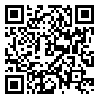Volume 23, Issue 12 (December 2023)
Modares Mechanical Engineering 2023, 23(12): 661-672 |
Back to browse issues page
1- Technical and VocationalUniversity , s-amini@tvu.ac.ir
2- Technical and VocationalUniversity
2- Technical and VocationalUniversity
Abstract: (483 Views)
Applying ultrasonic vibrations (UV) in manufacturing processes has resulted in various significant improvements. This study investigates longitudinal UV effect on the performance of electric hot incremental forming (EHIF) process of Ti–6Al–4 V sheets. In this technique, UV with a high frequency and low axial amplitude were combined with EHIF. Required devices were designed, manufactured, and used for performing the EHIF process. In this mechanism, UV were transmitted to a rotary forming tool attached to a CNC machine spindle. Hyperbolic geometry was fabricated to find out the most effective parameters values. Design of experiment and analyses of variance (ANOVA) were employed to identify optimum conditions for effective parameters. These parameters were optimized by response surface methodology (RSM). Alternating among various input values of EHIF parameters including feed rate, pitch, and current has affected output parameter values such as surface quality and maximum forming angle were investigated in both conventional-EHIF and ultrasonic-assisted EHIF processes. Experimental results have demonstrated that combination of EHIF with UV has resulted in improving surface quality. Also, XRD (X-ray diffraction) phase analysis showed that the β phase (BCC structure) was increased due to ultrasonic stimulation. Intergranular heating has been done in Ti-6Al-4V alloy. The results have proved that the transformation from α phase to β phase has taken place in a faster and simpler manner. This occurrence has changed the phase composition from a dominant percentage of alpha phase (α) and HCP structure to a combination with a higher percentage of beta phase (β) and BCC structure. This phenomenon has improved the formability while it has increased the maximum forming angle about 25% ~ 30%
Keywords: Ultrasonic ・ Hot incremental forming ・ Formability ・ Ti–6Al–4 V ・ Transition temperature reduction
Article Type: Original Research |
Subject:
Forming of metal sheets
Received: 2023/10/21 | Accepted: 2024/01/18 | Published: 2023/12/1
Received: 2023/10/21 | Accepted: 2024/01/18 | Published: 2023/12/1
| Rights and permissions | |
 |
This work is licensed under a Creative Commons Attribution-NonCommercial 4.0 International License. |

